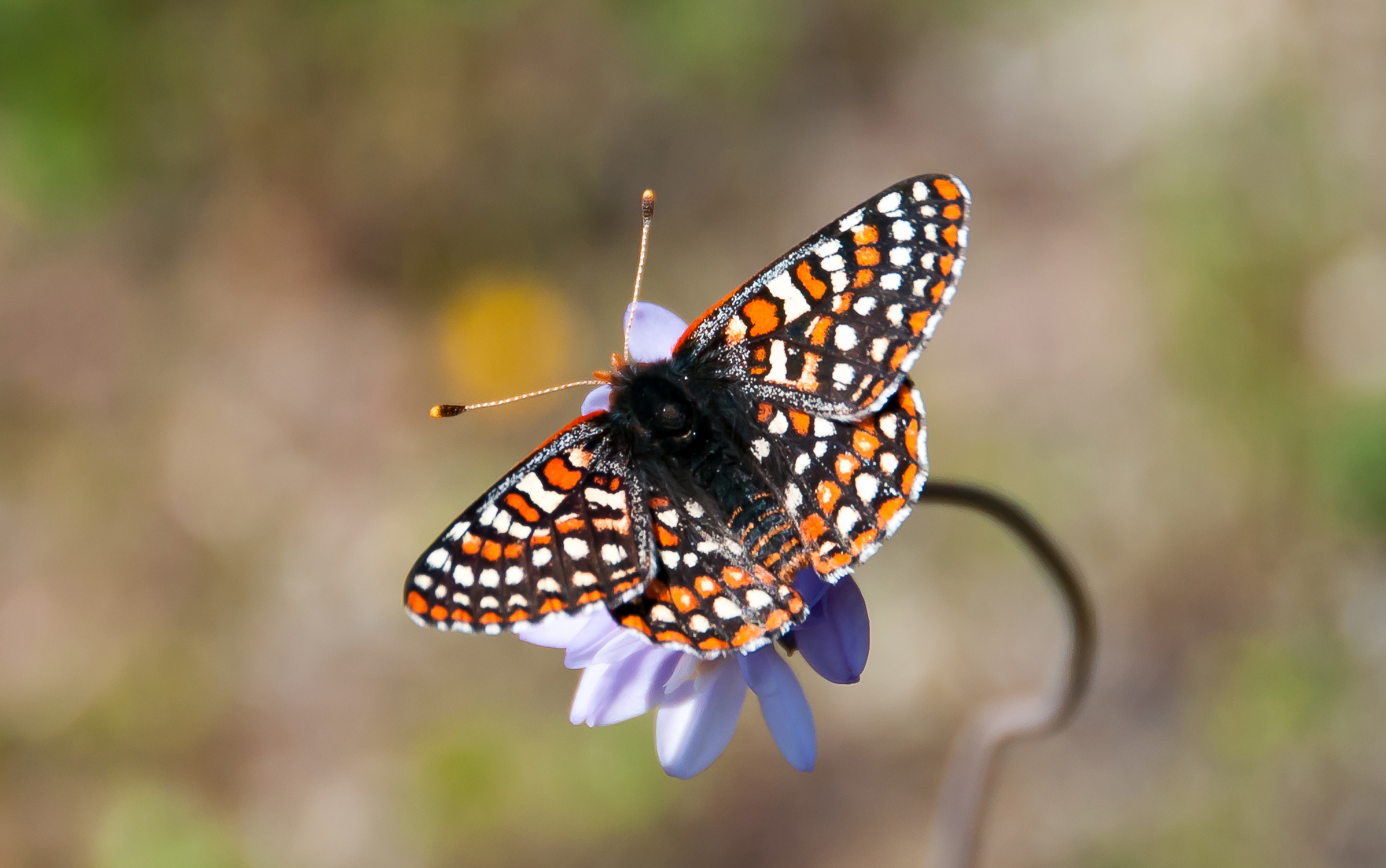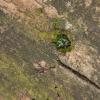There are many reasons to oppose the wall along the southern border—including the loss of habitat for some of our smallest and most important animals.
The building of a wall along the United States–Mexico border has become a topic of debate, in both private and public spheres. The majority of Americans (58%) oppose the border wall for a variety of social, economic, and environmental reasons. Political disputes over border wall funding also led to the record-breaking 35-day government shutdown from December 22, 2018 to January 25, 2019—which negatively affected hundreds of thousands of people and the services of several federal agencies—and still rumble on within Washington, D.C., as this blog is published. All of these are significant concerns, but as a conservation organization, the Xerces Society’s focus is on the border wall’s environmental implications.
Recently, debate about the potential environmental impacts of the border wall has been in the spotlight because construction would impact the National Butterfly Center, near Mission, Texas. The Xerces Society opposed putting the wall across the Center, and joined in calling for the federal government to reconsider moving forward with construction. The good news is that the Center appears to have a reprieve: The government funding bill approved by congress includes a ban on building the wall through several sites in the Lower Rio Grande Valley, including the National Butterfly Center.

However, the National Butterfly Center is a microcosm of what will happen on a larger environmental scale as a result of the border wall—even if only parts of the wall are built. And with news reports that President Trump will sign the funding bill today and declare a national emergency, this debate becomes more timely and urgent.
Over the past few decades, the Department of Homeland Security has already constructed 605 miles (974 kilometers) of border barriers. Because the total length of the continental border is 1,954 miles (3,145 km), more than 1,300 miles (2,090 kilometers) of barrier could still be built if the current administration has their way. In preparation, the DHS has been waiving all regulations that could hinder wall construction due to environmental, archeological, or cultural reasons—a list of some 27 acts including the Endangered Species Act, Clean Water Act, National Historic Preservation Act, and Native American Graves Protection and Repatriation Act—setting a dangerous precedent of eroding key protections.
In addition to the policy implications of the border wall, there are other serious potential impacts for wildlife—especially species that need to move across the region to access habitat or to find mates. For them, the political construct of an international border has no meaning, but nevertheless the construction of a wall could be catastrophic. For instance, the jaguar (Panthera onca) and ocelot (Leopardus pardalis) are already threatened with extinction, and the border wall would add an additional stressor.
Similarly, some people have expressed concern about monarchs and other butterflies being unable to migrate or move over the wall. Although that is not a concern for most bee or butterfly species (including monarchs), there are some species that are low-flying, and whose movements could be hindered by a border barrier. The endangered Quino checkerspot butterfly (Euphydryas editha quino) is one example. The Quino checkerspot’s known populations straddle the border between California and Mexico and would be divided by the wall.

The real issue, however, is the loss of local habitat due to construction of the wall. New barriers and associated infrastructure will directly destroy tens of thousands of acres in some of the most diverse habitats in North America—undoubtedly negatively affecting local species. Although many media images have shown tall, narrow concrete and steel barriers, the border wall will impact a much wider swath of land—including the construction of service roads and associated buildings, and clearing vegetation on both sides of the barrier for visibility and ease of access. This is based partly on what has already occurred: the 605 miles of already-existing border barriers are serviced by 4,970 miles (8,000 kilometers) of roads, as well as thousands of miles of undesignated routes created by off-road patrol vehicles. Indeed, a recently published paper in Bioscience details the potential impacts of construction of the wall and associated infrastructure, including: the elimination or degradation of natural vegetation, killing animals both directly and through habitat loss, fragmenting habitats (thereby subdividing populations into smaller, more vulnerable units), and reducing habitat connectivity. According to the Bioscience paper, the wall could also change wildfire patterns.
The wall and associated infrastructure will also include nighttime lighting, which can disorient moths and other night flying insects that are vital food sources for species from birds to bats. Meanwhile, already-existing spans of border fence have “acted as dams in rainy season flash floods,” as detailed in this piece by National Geographic—notably causing damage to Organ Pipe Cactus National Monument in Arizona in 2008. The Bioscience paper also discusses this topic, raising concerns of soil erosion and the alteration of hydrological processes (e.g., floods) if the border barrier is expanded.

It is not just any land that will be impacted. In addition to family farms and other private property, the wall will negatively affect many areas that are species-rich and ecologically sensitive. Indeed, many animals and plant populations will be threatened if the wall is built. The Bioscience paper estimates that, if completed, the administration’s plan will bisect the geographic ranges of 1,506 native terrestrial and freshwater animal and plant species, including 62 species listed as Critically Endangered, Endangered, or Vulnerable by the International Union for Conservation of Nature (IUCN) Red List.
The 1,500+ species listed in the paper include 199 invertebrates (178 insects, 11 snails and slugs, 9 aquatic mollusks, and 1 spider). Unfortunately, the paper likely underestimates the number of insects and other invertebrates that will be impacted, as the data is simply not available to assess most invertebrate species. Insects and other invertebrates are the least well-studied animals, and their ranges are not well-documented. We do know, however, that on a global level insects outnumber mammals 150:1—there are approximately 6,500 documented mammal species and almost 1 million documented insects. Considering that 163 mammal species are documented within the footprint of the border barrier area, there could potentially be over 24,000 insect species within the same area. (This estimate does not include invertebrates like mollusks and crustaceans.) Especially when you consider that the lands along the border also have relatively high butterfly and bee diversity, it is clear that the border wall’s impact on insects could be substantial.

In short, there are many reasons to oppose the wall along the southern border—including the loss of habitat for some of our smallest and most important animals. Accordingly, scientists and conservationists are adding their voices in opposition to the proposed border wall. Defenders of Wildlife organized an effort to encourage scientists to speak up on this issue. As part of that effort they helped publish the Bioscience article, which states:
“We urge the US government to recognize and give high priority to conserving the ecological, economic, political, and cultural value of the US–Mexico borderlands. National security can and must be pursued with an approach that preserves our natural heritage.”
This paper has been signed by more than 2,900 scientists, including some from the Xerces Society.
In the face of mounting environmental challenges, the Xerces Society will continue to focus our attention on protecting, restoring, and enhancing habitat for invertebrates in all landscapes—urban and rural, farms and cities, roadsides and wildlands—so we can maintain invertebrate biodiversity for generations to come.
Correction: A previous version of this blog post included errors pertaining to an incorrect ratio of mammals to invertebrates. This was corrected on February 27, 2019.



